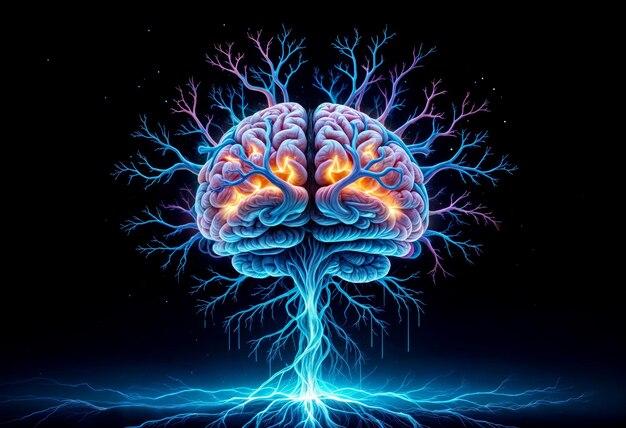Brainpathjunction” refers to the critical points where neural pathways intersect or converge within the brain. These junctions play a pivotal role in transmitting and integrating information across different parts of the brain. Understanding Brainpath Junctions is crucial for gaining insight into how our brains process information, learn, and adapt.
The Concept of Neural Pathways
Neural pathways are networks of neurons that transmit signals between different regions of the brain. These pathways are essential for all cognitive functions, including thought, memory, and movement. The connectivity and efficiency of these pathways influence how well different parts of the brain communicate with each other.
The Role of Brainpath Junctions
Brainpath Junctions are key points within neural pathways where information from various sources is integrated. They are crucial for ensuring that signals are properly relayed and processed, making them essential for overall brain function.
Structure of the Brainpath Junction
The anatomical structure of a brainpathjunction Junction is complex, involving numerous neurons, synapses, and supporting cells. These junctions are where synaptic transmission occurs, enabling the propagation of signals across the brain.
Formation of Brainpath Junctions
Brainpath Junctions begin to form during early development and continue to change throughout life. Various factors, including genetics, experience, and environmental influences, contribute to their formation and ongoing modification.
Brainpath Junctions in Learning
Learning involves the strengthening of specific neural pathways, and Brainpath Junctions play a vital role in this process. They are involved in memory formation, recall, and the overall plasticity of the brain.
Brainpath Junctions and Cognitive Function
Cognitive functions such as problem-solving, decision-making, and emotional regulation are heavily influenced by the efficiency and health of Brainpath Junctions. Dysfunction in these areas can lead to cognitive impairments.
Disorders Associated with Brainpath Junctions
Malfunctioning brainpathjunction Junctions are linked to various neurological disorders, including Alzheimer’s disease, epilepsy, and schizophrenia. Understanding these links is essential for developing effective treatments.
Neuroplasticity and Brainpath Junctions
Neuroplasticity refers to the brain’s ability to reorganize itself by forming new neural connections. Brainpath Junctions are central to this process, especially in recovery from injury or adapting to new learning experiences.
Brainpath Junctions and Aging
As we age, Brainpath Junctions may deteriorate, leading to cognitive decline. Understanding these changes is key to developing strategies to maintain cognitive health in older adults.
Brainpath Junctions in Neurosurgery
In neurosurgery, preserving brainpathjunction Junctions is critical to avoid impairing essential brain functions. Surgeons use advanced imaging techniques to map these junctions before and during surgery.
Brainpath Junctions and Technology
Technological advances, such as neuroimaging and brain-computer interfaces, have enabled more precise mapping and understanding of Brainpath Junctions. These technologies are paving the way for new treatments and interventions.
Future Research Directions
Ongoing research intobrainpathjunction Junctions is likely to lead to significant breakthroughs in understanding the brain. Future studies may uncover new ways to enhance brain function or treat neurological disorders.
Brainpath Junctions and Consciousness
The role of Brainpath Junctions in consciousness is a topic of intense debate. Some theories suggest that these junctions may hold the key to understanding the nature of consciousness itself.
Conclusion
Brainpathjunction Junctions are fundamental to how the brain functions, affecting everything from basic sensory processing to complex cognitive tasks. As research continues to advance, our understanding of these critical structures will deepen, potentially leading to new ways to treat brain disorders and enhance cognitive abilities.
FAQs
- What is a brainpathjunction Junction?
- A Brainpath Junction is a point in the brain where multiple neural pathways intersect, allowing for the integration and relay of information across different brain regions.
- How do Brainpath Junctions affect learning?
- Brainpath Junctions are crucial for the process of learning, as they facilitate the strengthening of neural connections that underlie memory formation and cognitive flexibility.
- Can malfunctioning Brainpath Junctions cause neurological disorders?
- Yes, dysfunction in Brainpath Junctions is associated with various neurological disorders, including Alzheimer’s disease, epilepsy, and schizophrenia.
- What is the role of Brainpath Junctions in neuroplasticity?
- Brainpath Junctions play a central role in neuroplasticity, enabling the brain to adapt by forming new neural connections in response to learning or injury.
- Do Brainpath Junctions change with age?
- Yes, Brainpath Junctions can deteriorate with age, leading to a decline in cognitive functions such as memory, problem-solving, and emotional regulation.
- How are Brainpath Junctions studied in neuroscience?
- Brainpath Junctions are studied using advanced neuroimaging techniques, which allow researchers to map and analyze these critical structures in the brain.

